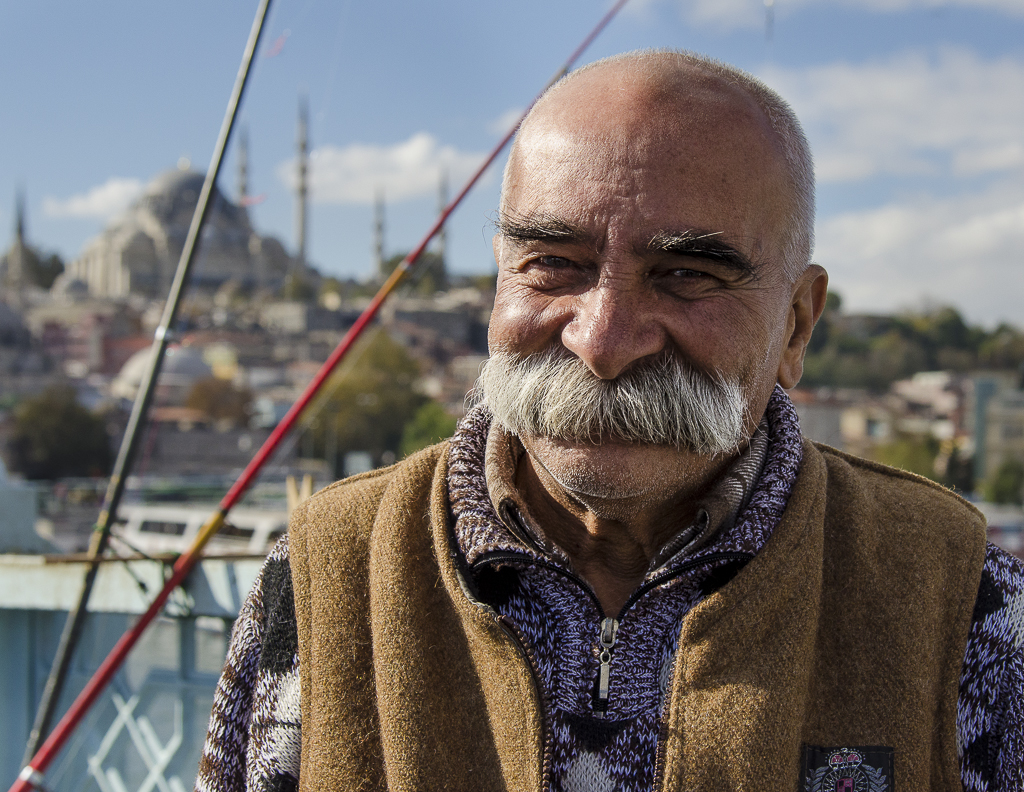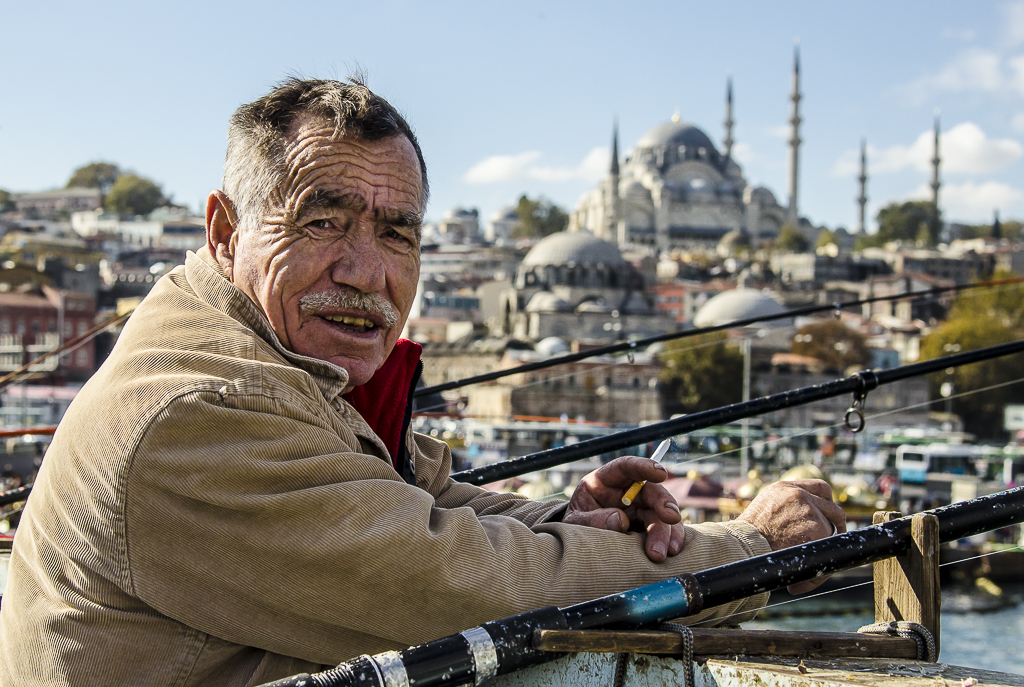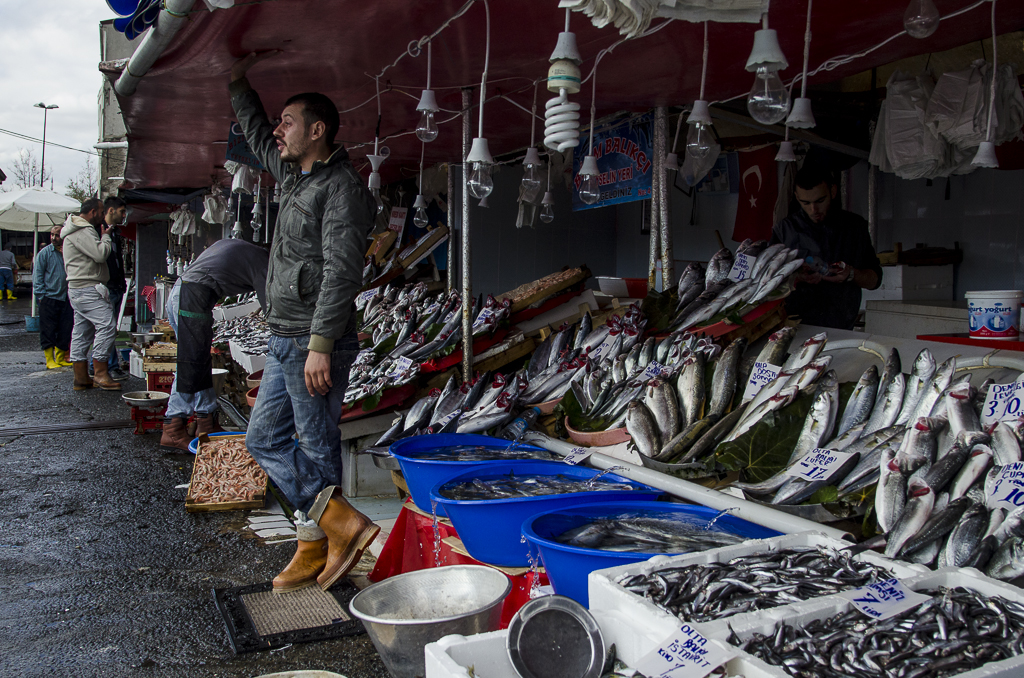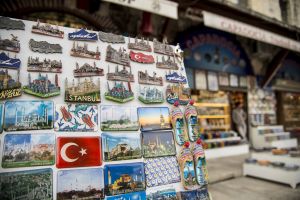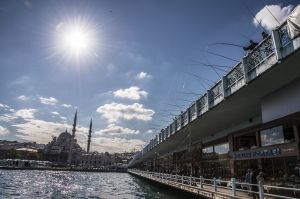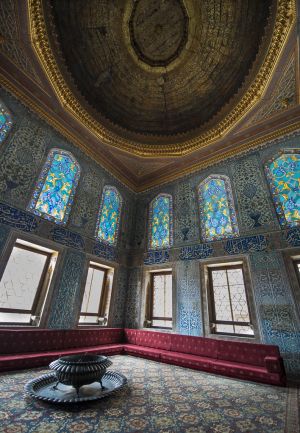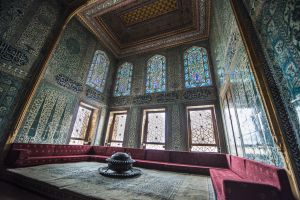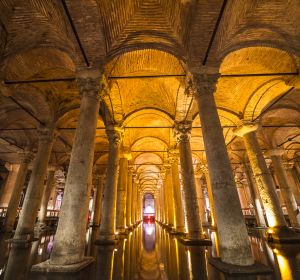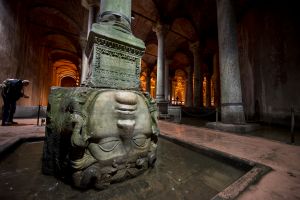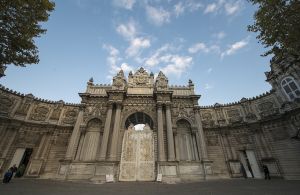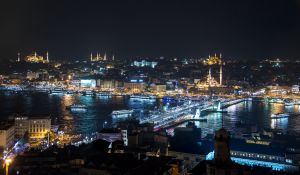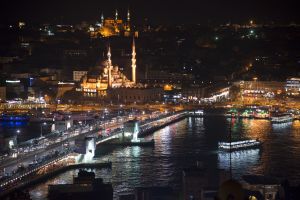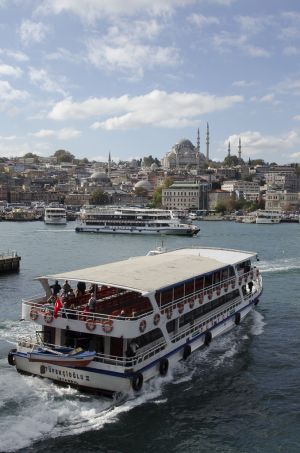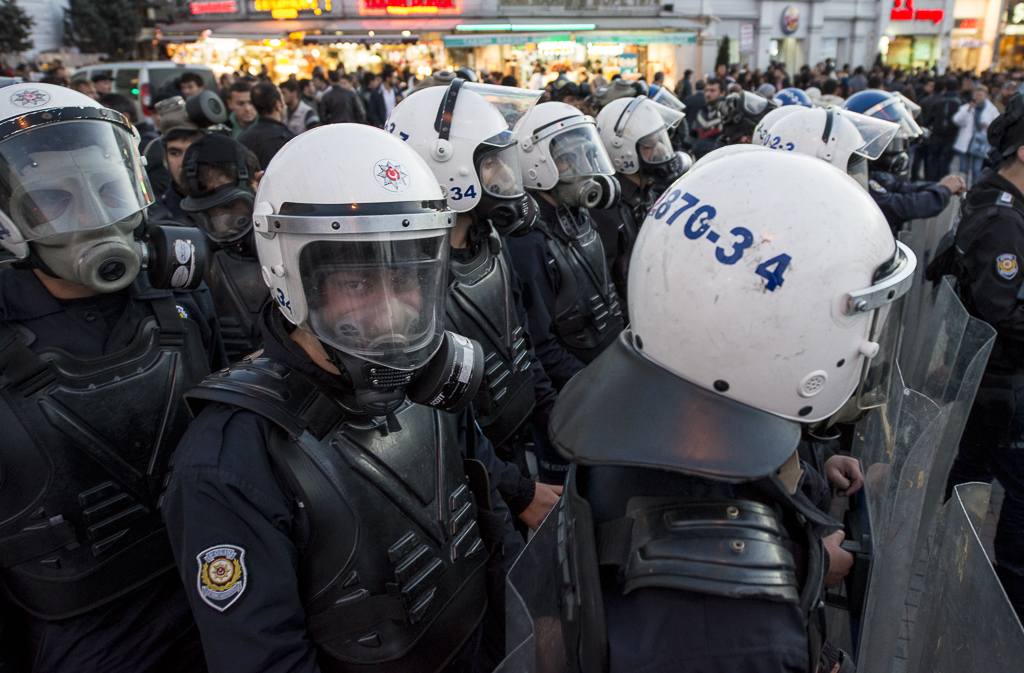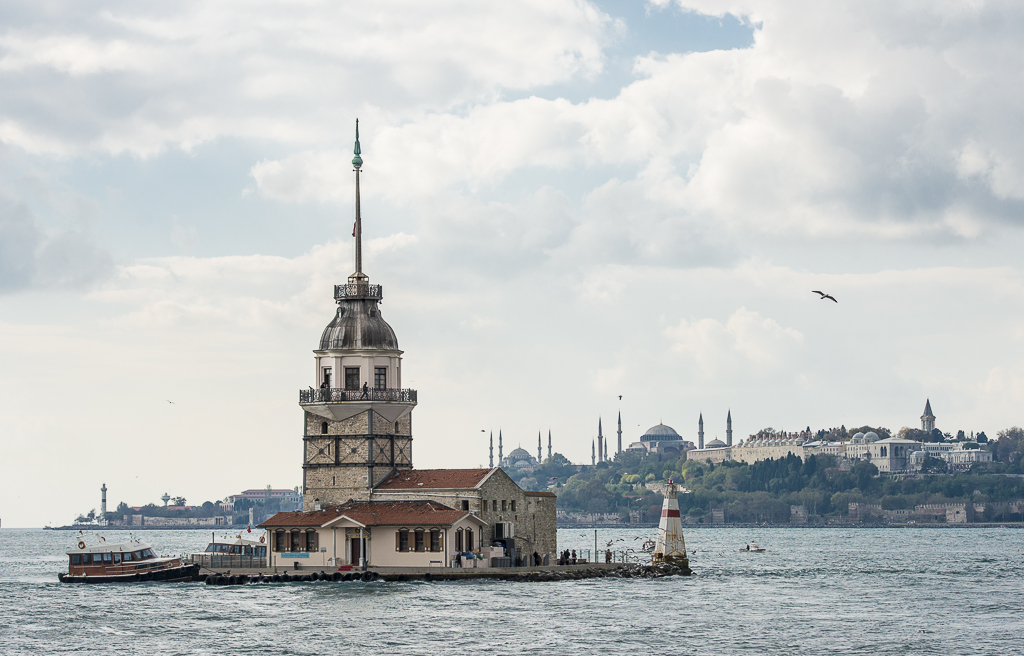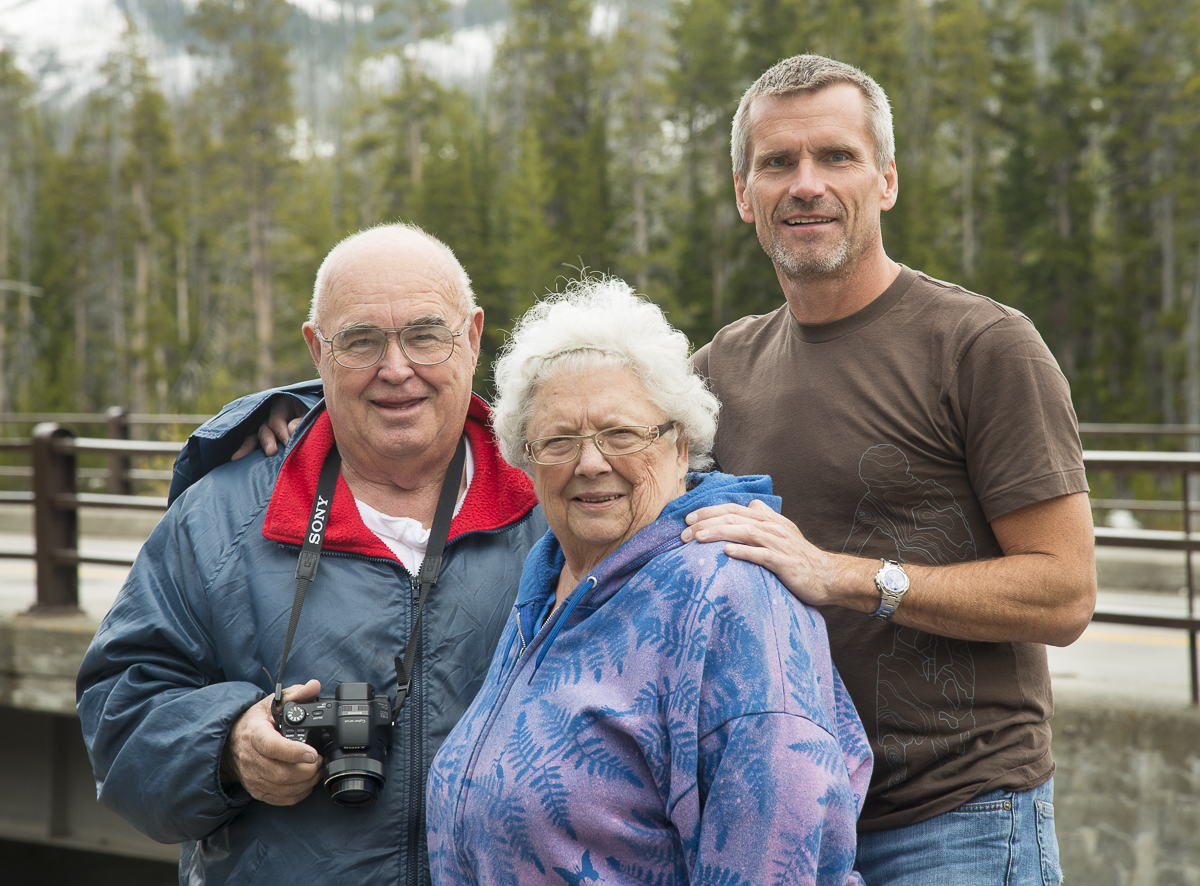If you’re like me, you’ve always been a little hazy about where Europe ends and Asia begins. In Southern Europe, at least, there’s a very definitive answer: downtown Istanbul. The Bosphorus Strait — a waterway that bisects Istanbul and connects the Black Sea with the Sea of Marmara – divides Istanbul’s 9 million European residents from its 4 million Asian residents. Apparently at least a million Istanbulites (Istanbullies?) have a transcontinental commute each weekday morning. My first-ever trip to Asia was via a 10-minute ferry ride across the Bosphorus.
Another river-looking body of water subdivides the “new” and old parts of the European side. The double-decker Galata Bridge joins the two. Cars and fishermen are on the top level; restaurants on the bottom. So as you sit and eat, you watch bait and lures drop down from above, then wriggling fish being hoisted back up to the top layer.
The picture way below of the tiny island is Maiden’s Tower – taken from the Asian side, looking back toward the Hagia Sophia and Blue Mosque in the European Old Town. The fancy blue rooms are the prince’s apartments at Topkapi Palace. The police in riot gear were in Taksim Square. Apparently a Kurdish protest had been averted just as I arrived – and unlike a similar protest two days prior, the cops didn’t even use the tear gas.
* * *
One of my most memorable sights in Istanbul is one for which – alas – I have no picture. But a camera would have been very much out of place in a 300-year-old Turkish bath. This was the scene:
I’m flat on my back on a gray-marble floor, looking straight up. I’m completely wet and covered with sudsy soap, wearing nothing but a sopping wet, plaid hand-towel-of-a-thing. It’s plopped across body parts that one would ordinary call “private,” but that term doesn’t really seem accurate under the circumstances.
I’m looking up at a 300-year-old dome, which rests atop eight marble pillars and dominates an octagonal room roughly the size of half a tennis court. Every surface is grey marble, and the room is currently heated to a stifling, steamy 140 degrees. Within the dome ceiling are several softball-sized pieces of glass, allowing dots of dim light inside. The walls are lined with what look like fancy marble mop sinks. The room’s steamy heat is causing a steady drip of water from the chandelier that hangs from the center of the dome.
In the edge of my vision to the left, I see the curly decorative edging of the bottom-side of one of those Greek-urn-looking marble mopsinks. Leaning over me from my right side is Saleh, a 50-ish Turkish man.
Saleh was my tellak – the term for an attendant in a Turkish bath. Saleh seems to be the most outgoing tellak in the historic Cagaloglu Hamami. “Hamami” means bathhouse in Turkish. Saleh’s son also works there as a tellak. Saleh is neither tall nor short, neither thin nor heavy. Like all the other tellaks in the room, he’s shirtless, wearing a blue plaid towel-thing to distinguish himself from the customers in orangish plaid. He has black hair and a big moustache, and about as much chest hair as you might expect for a middle-aged Turkish man.
Saleh’s job was to bathe me. And bathe me he did – using primarily a weird witches-broom-looking brush thing, a scratchy mitt, lots of sudsy soap, and dozens of panfuls of hot water dipped out of those marble mopsinks. He’d occasionally cool himself off pouring a pan of water over himself from one of the cold-water mopsinks. The room contains 12 or so other men – half of them tellaks and half of them mostly-naked customers enduring the same fate I am.
It was my first and only Turkish bath. When in Rome, you do as the Romans do; when in Istanbul, you go to a Turkish bath.
